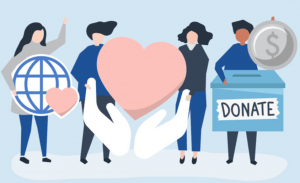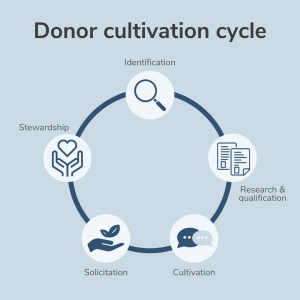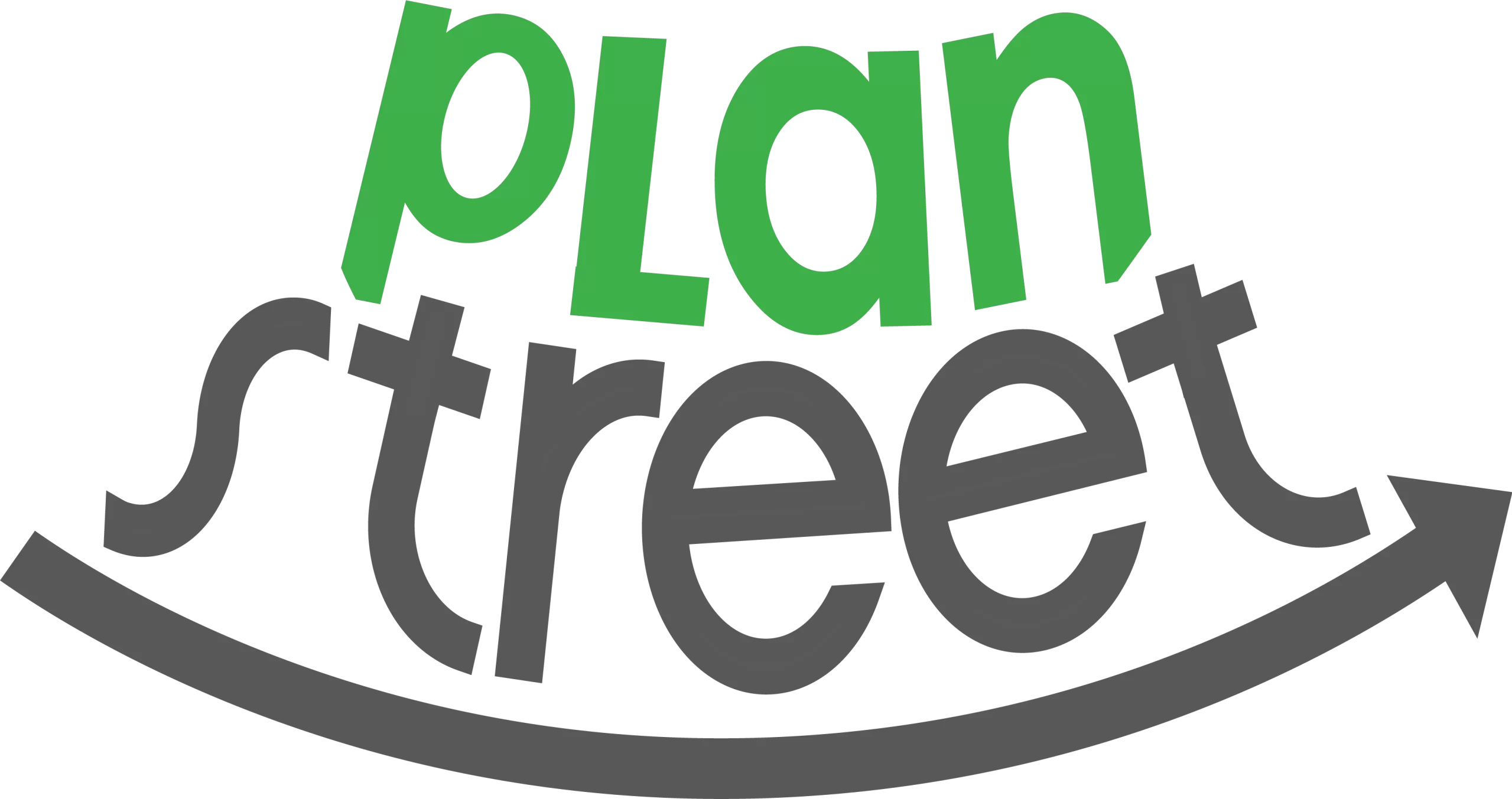PlanStreet’s Guide to Donor Management Systems

There’s hardly a nonprofit in the world that runs without donor funding. All nonprofit organizations of the world depend heavily on the financial and material support of generous individuals or socially responsible organizations. But, managing donors and keeping a track and record of the incoming aid doesn’t come easy, especially when done in conventional ways.
Besides effectively managing the donor individuals or organizations, ensuring transparency in the process also comes as a big challenge. The difficulties only pile up when donor portfolio increases and but there’s no efficient system in place to manage donor relations and channel the aid to the right recipients. That’s where advanced donor management systems come in handy.
What is Donor Management System?
A Donor Management System is a bespoke software that helps NGOs save operational time and costs, bring inefficiency to the workings of the organization, and boost fundraising efforts. Good Donor Management Software will help the nonprofits understand their donors better and maximize their relationship with them.

Some of the more advanced Donor Management Systems available today efficiently organize the donor data, give nonprofit organizations deep insights into the latest donor trends, and even make recommendations to help them improve the prospects of receiving future donations.
This kind of donation software not only enables organizations to manage donors and donor relations but also enables them to effectively track the incoming donations and their allocations. All the crucial information you need about the donor or the donation is usually collected and shown in one place for effective donor management and relations.
Also Read: Buyer’s Guide for Nonprofits: What to Look For In A Case Management Software
What are the Top Benefits of a Donor Management System?
A Donor Management System combines all of your donor data in one place, giving you quick access to all the crucial information you need to complete the donor cycle and strengthen donor ties. Organizations that have outgrown the manual work and spreadsheets and adopted advanced Donor Management Software are experiencing great results.
Below are some of the ways that nonprofits can benefit from a good Donor Management System:
- Donor information at your fingertips: Everything there’s to know about an existing or potential donor is right there when you need it
- Digitization of the entire Donor Cycle: The entire Donor Cycle – right from identification to stewardship – is digitized.
- Curation of donor data: Entire donor data is collected and curated at one place for your ease and swift access.
- Ability to keep full track: Remember deadlines for applying for grants and submitting final reports with ease.
- Boost your fundraising efforts: Operational efficiency improves your chances of landing more funds faster.
What is Donor Cycle?

Donor Cycle, also known as Donor Cultivation Cycle, entails the entire donation process, right from the identification of the potential donors to the receiving and acknowledgment of the donation. The Donor Cycle typically comprises 5 steps, namely:
- Identification: This is the step where nonprofits ID potential donors, be it individuals or organizations.
- Qualification: In this step, a nonprofit determines whether or not the individual or organization in question is a viable prospect.
- Cultivation: When the nonprofit decides to move the prospect towards solicitation, the step is called Cultivation.
- Solicitation: This is where a nonprofit formally reach out to the prospect and asks for material or financial help.
- Stewardship: In this concluding step of the Donor Cycle, the nonprofits updates, thank, and recognizes the donor on the use and impact of their support.
The Donor Cultivation Cycle is a long and tiring process that can easily frustrate the most seasoned donor managers at a nonprofit. But the management of charitable giving can be streamlined and effectively managed if an advanced Donor Management System / Software is in place.
It helps nonprofits keep full track of donors and their donations so both are managed with greater ease and efficacy. Donor trust thrives in a system where processes are swift and transparent, and where the aid reaches the deserved without any leaks, mismanagement, or delays.
What are Donor Relations?
A donor is an individual or organization that is or can extend material or financial support to your nonprofit, which essentially runs on donations. But, it’s easy to lose track of a donor or a donation in the absence of a Donor Management System for nonprofits, which can effectively ruin your relationship with a potential donor and thus jeopardize your good cause.
Donors are vital for securing your nonprofit’s stability and success, and your relationship with them must be conducted with extra care and understanding. The donor cycle, as discussed above, is a complex process that demands aggressive, often exhaustive, follow-ups through every step. Losing track of a potential lead or failure to address certain donor queries can easily deprive you of solid funding.
That is the reason why nonprofit organizations of all sorts and sizes are using Donor Management Systems these days. These systems put the entire donor cycle on their fingertips, reducing the conventionally tedious task to mere clicks and taps – everything you need to know about the donor, the donation, or the progress in a certain donor cycle is simply a click away!
How Do You Keep Track of Donors?
In some conventional nonprofit settings, the record-keeping is still usually done on paper with the office shelves laden with old-school files. Some other organizations choose to do recordkeeping on an Excel spreadsheet or a specialized electronic database. But the Donor Cycles and Donor Relations aren’t as effective at such organizations as they are at the ones that use advanced Donor Management Systems.
Some top-of-the-line Donor Management Software makes donor record-keeping and tracking a breeze. With such cutting-edge tools, you know everything that’s there to know about an existing or potential donor. On an open account, you’re able to keep full track of the wherein Donor Cycle you currently stand and what and when you need to do next.
Donor relations are sensitive and can easily be exhausting. It’s crucial for you to know who the donor is, what they do, and how and when – and how often – they like to be contacted. While you may find aggressive follow-ups necessary to accomplish your funding goals, the same can frustrate a potential donor increasing your chances of losing out on a good deal. With a smart donor engagement manager in place, the likelihood of that happening is minimized.
Fundamental Donor Management Tips for Small Nonprofits
Even if you’re a small nonprofit, you don’t have to settle for small donations. There are ways you can employ to maximize the efficiency of your donor management strategy by folds. Some of them are discussed below:
- Build and follow a Donor Management Standard Operating Procedure (SOP)
The fastest and most effective way to get more from your donor management strategy is to document that strategy. An SOP should never be a process that exists only in the head of one dedicated staff member – rather it should be well documented for everyone to follow.
Nonprofits have a high turnover so you’d want to have a documented standard operating procedure for everything including how a donor is identified or approached, how the database is used, and how the stewardship is done, among all other things.
- Diversify Communications Channels
Just as your choice of words matters a lot when dealing with each donor, so does the communication channel you’re using. Just as you would do with a client, put your own comfort aside when dealing with a donor and communicate in a way that he or she would find suitable.
Some of the donors would appreciate you getting in touch with them via email; others would prefer a more direct method like a WhatsApp message that they can read later. Some other donors may want you to get in touch directly via a phone call as they may be too occupied with work to check your email or message. The key is knowing your donors and understanding their preferences.
- Foster Creative Engagement Methods
Larger nonprofits usually tend to engage in high-value pursuits like support from foundations or high-net-worth-individuals. For smaller nonprofits, however, creative engagements can turn things around. Although they can be tough, the results can be rewarding.
Pouring money and manpower on winning and dining the elite can be one solution for some, but for many others, creative engagement methods such as social media campaigning, participating in local events like #GivingMonday, or hosting volunteer events might work better.
- Employ a Donor Management System
If there’s one key to smart donor management for small nonprofits, it’s none other than a Donor Management System. In this fast and increasingly digital age, a smaller nonprofit simply can’t afford to spend (read waste) time or resources on tedious everyday tasks.
Instead, you can invest in good Donor Management Software that can bring efficiency to your organizational operations. From information to tracking and potential donor leads, such software will reduce it all to mere taps and clicks.
What is the Best Donor Management Software?
There are dozens of Donor Management Software or Systems currently available on the market. But not all of them are designed for your specific nonprofit needs. While many of such systems are usually customizable, it’s always better to ask for an expert opinion before choosing the one that best fits your organizational needs.
Before making a call on donor relationship management, look into how effectively it allows you to collect, curate, and access user data, how it helps you build better donor relations, how it enables you to set your communications preferences, and how well it equips you with the ability to manage and maintain donor profiles.
Features of a Donor Management Software
A modern donor management solution will enable any small or large nonprofit to digitize the entire donor cycle and improve its chances of acquiring the required funds. Typically, the right system should offer most of the following features:
- CRM Technology: This will help you keep better track of your existing as well as potential donors by giving you summaries and timelines for all leads.
- Engagement Scoring: This will help you see which donors you should be more dedicated to and what levels of stewardship they need.
- Wealth Screening: This will help you to see which ones of your potential leads could be giving more based on their financial status.
- Online Giving: This will help you determine which donors will be the right ones too for donations through your website or other digital channels.
These are just some of the features that a system is supposed to offer. Whatever system you’re going to choose, first evaluate it for your particular organizational needs so you’re sure of your investment yielding positive results.
Choose the Right Donor Management Software for Nonprofits
As discussed above, online donor management software is not a one-size-fits-all solution. Instead, they need to be carefully evaluated by nonprofits to rightly fit into the system and bring efficiency to everyday operations. If you make the right choice, the system can potentially become the backbone of your organization.
So, to have the right data on hand, and equip yourself with the ability to identify, track, and predict, choose a nonprofit donor management software that fits your needs and can turn things around for the health of your nonprofit. With an accurate view of who your donors actually are, you’ll be able to execute donor research and plan a fundraising strategy that’s effective and result-oriented.

